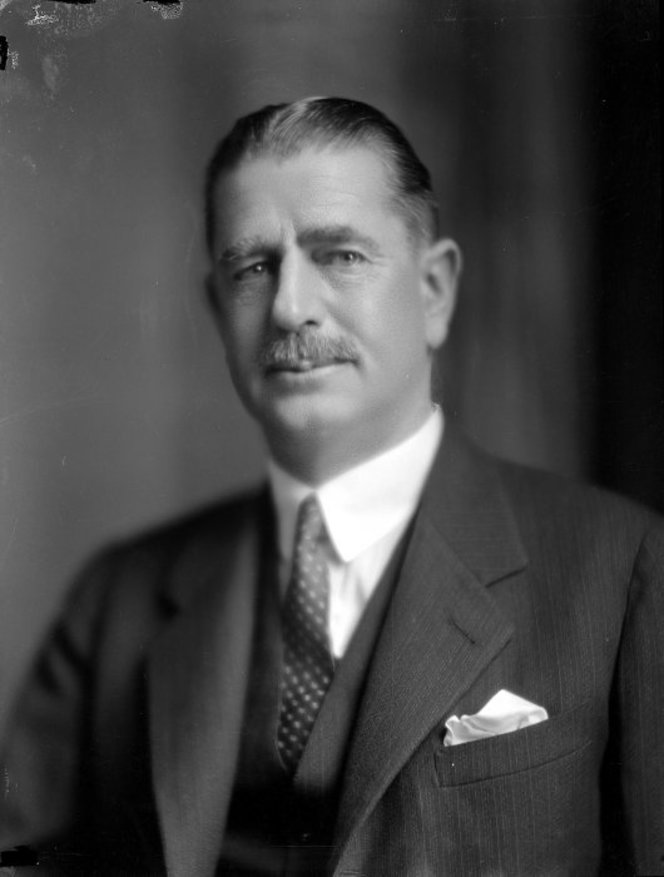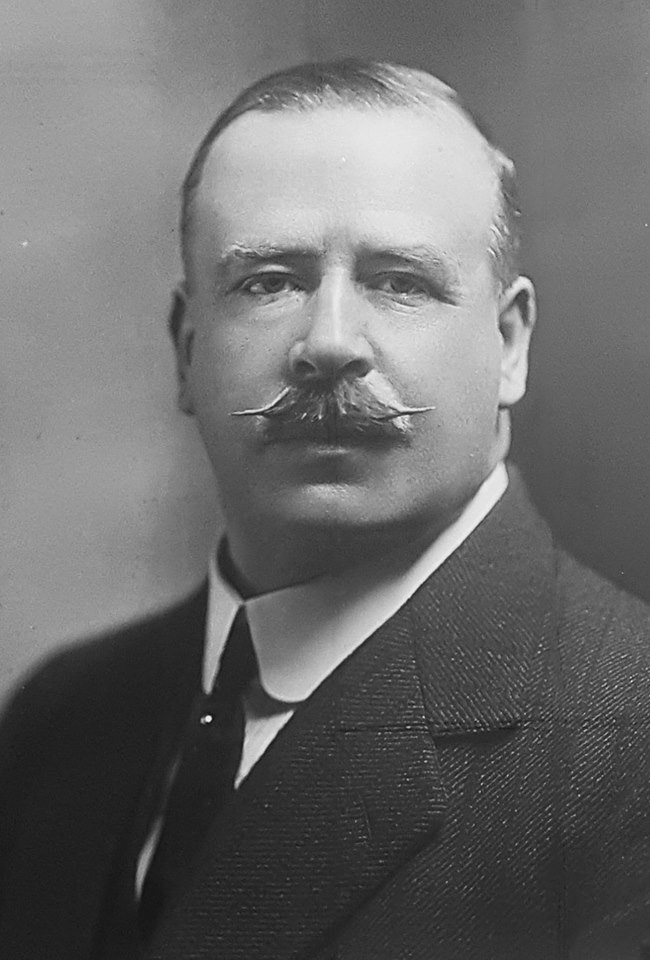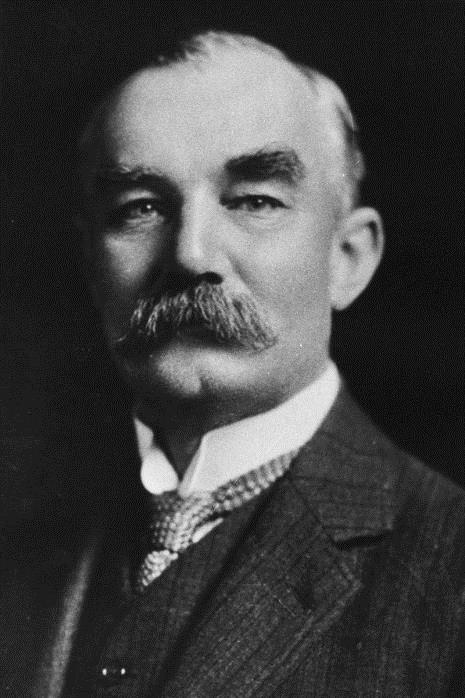|
United–Reform Coalition Government Of New Zealand
The United–Reform coalition government of New Zealand was the ministry that governed New Zealand from 1931 to 1935. It was a coalition between two of the three major parties of the time, the United and Reform, formed to deal with the Great Depression which began in 1929. The Labour Party refused to join the coalition, as it believed that the only solution to the depression was socialism, which United and Reform did not support. Rather, they attempted to solve the country's economic problems by cutting public spending. This, the policy of making the unemployed do relief work for the unemployment benefit, and other cost-cutting policies, made the government the most unpopular of its era, and it was defeated in the 1935 election. Significant policies Economic * Cut government spending in order to balance the budget. * The Reserve Bank of New Zealand was established in 1934, beginning the first issue of banknotes for the New Zealand Pound. * Created the Mortgage Corporation of N ... [...More Info...] [...Related Items...] OR: [Wikipedia] [Google] [Baidu] |
List Of New Zealand Governments
The New Zealand Government exercises executive power in New Zealand. This article lists spans of government under a party or coalition, as well as ministries under a prime minister. There have been three distinctly different periods of government in New Zealand—firstly, the period before responsible government; second, from 1856 to 1890, the period of responsible government; and the third period started with the formation of political parties in 1891. Guide to list This article lists the successive governments of New Zealand since 1856. The first government which formed along political lines did not appear until 1891, when John Ballance formed the Liberal Party and the Liberal Government. A government is named (by political commentators, as well as self-referentially) for the largest party that leads it – though compare the United–Reform coalition Government of 1931–1935. The term 'ministry', as used in this article, refers collectively to all the ministers who dire ... [...More Info...] [...Related Items...] OR: [Wikipedia] [Google] [Baidu] |
1931 New Zealand General Election
The 1931 New Zealand general election was a nationwide vote to determine the shape of the New Zealand Parliament's 24th New Zealand Parliament, 24th term. It resulted in the United–Reform Coalition, newly formed coalition between the United Party (New Zealand), United Party and the Reform Party (New Zealand), Reform Party remaining in office as the United–Reform coalition Government of New Zealand, United–Reform Coalition Government, although the opposition New Zealand Labour Party, Labour Party made some minor gains despite tallying more votes than any other single party. Background In the 1928 New Zealand general election, 1928 election, the Reform Party (New Zealand), Reform Party won 28 seats to the United Party (New Zealand), United Party's 27 seats. Shortly after the election the Reform Party lost a vote of no-confidence and the United Party managed to form a government, the United Government of New Zealand, United Government, with the support of the New Zealand Labour ... [...More Info...] [...Related Items...] OR: [Wikipedia] [Google] [Baidu] |
Minister Of Immigration (New Zealand)
The Minister of Immigration was established in 1872 as the Secretary for Crown Lands and Immigration. The minister appointed was William Fitzherbert but when replaced later in the year by Maurice O'Rorke, the title was changed to Minister of Immigration. The current minister is Michael Wood, while the Associate Minister of Immigration is Phil Twyford. Functions and responsibilities The Minister of Immigration is responsible for leading the policy and strategic direction of the New Zealand immigration system and setting the rules and criteria for the granting of visas and entry permission, and making decisions in individual cases. The Minister of Immigration receives operational support from Immigration New Zealand, which is part of the Ministry of Business, Innovation and Employment The Ministry of Business, Innovation and Employment (MBIE; mi, Hīkina Whakatutuki) is the public service department of New Zealand charged with "delivering policy, services, advice and reg ... [...More Info...] [...Related Items...] OR: [Wikipedia] [Google] [Baidu] |
Minister Of Health (New Zealand)
The Minister of Health, formerly styled Minister of Public Health, is a minister in the government of New Zealand with responsibility for the New Zealand Ministry of Health and Te Whatu Ora—Health New Zealand. The current Minister of Health is Labour Party MP Andrew Little. History The first Minister of Public Health was appointed in 1900, during the premiership of Richard Seddon. The word "Public" was dropped from the title when Sir Māui Pōmare took over the portfolio from 27 June 1923, as simply "Minister of Health". In the health system reforms of the 1980s, the Department of Health lost responsibility for both the provision and funding of healthcare – these roles were transferred to separate Crown Health Enterprises (the precursors to today's District Health Boards) and the Health Funding Authority, respectively. The only function remaining was policy-making (resulting in the department being renamed a Ministry). For a time, there was a separate Minister in Cha ... [...More Info...] [...Related Items...] OR: [Wikipedia] [Google] [Baidu] |
Minister Of Forestry (New Zealand) ...
The Minister of Forestry is a ministerial portfolio in the government of New Zealand. The position was created in 1893 as Commissioner of Forests, being renamed Commissioner of State Forests in 1922 before finally having the title altered from Commissioner to Minister in 1949. The present Minister is Stuart Nash. List of Ministers The following ministers held the office of Minister of Forestry. ;Key See also * Minister for Primary Industries Notes References * External links Ministry of Agriculture and Forestry {{NZ ministerial portfolios Agriculture in New Zealand Forestry Forestry is the science and craft of creating, managing, planting, using, conserving and repairing forests, woodlands, and associated resources for human and environmental benefits. Forestry is practiced in plantations and natural stands. Th ... [...More Info...] [...Related Items...] OR: [Wikipedia] [Google] [Baidu] |
Minister Of Foreign Affairs (New Zealand)
The Minister of Foreign Affairs is a senior member of the New Zealand Government heading the Ministry of Foreign Affairs and Trade and responsible for relations with foreign countries. The current Minister of Foreign Affairs is Nanaia Mahuta. Responsibilities and powers The Minister of Foreign Affairs is responsible for overseeing New Zealand's relations with foreign countries and the promotion of New Zealand's interests abroad. The Minister is in charge of the Ministry of Foreign Affairs and Trade, including New Zealand's diplomatic staff. The office is often considered to be one of the more distinguished ministerial posts, and has at times been counted as the most senior role below that of the Prime Minister. In terms of actual political power, however, the Minister of Foreign Affairs is not as prominent as in countries such as Australia, Canada, the United Kingdom and the United States, with the Minister of Finance being considerably more influential. Historically, the Mi ... [...More Info...] [...Related Items...] OR: [Wikipedia] [Google] [Baidu] |
Minister Of Education (New Zealand)
The Minister of Education is a minister in the government of New Zealand with responsibility for the country's schools, and is in charge of the Ministry of Education. The present Minister is Chris Hipkins, a member of the Labour Party. History The first minister was appointed in 1878, shortly after the abolition of the Provinces allowed the central government to assume responsibility for education. It has existed without major interruption since then. The size of the portfolio has meant that, particularly since the Fourth Labour Government, additional associate ministers of education, and at times one or more ministers responsible for tertiary education, have been established. List of Education Ministers ;Key References External links New Zealand Ministry of Education {{DEFAULTSORT:Minister of Education (New Zealand) Education Education is a purposeful activity directed at achieving certain aims, such as transmitting knowledge or fostering skills and c ... [...More Info...] [...Related Items...] OR: [Wikipedia] [Google] [Baidu] |
Minister Of Defence (New Zealand)
The Minister of Defence is a minister in the government of New Zealand with responsibility for the New Zealand Defence Force and the Ministry of Defence. The present Minister is Peeni Henare, a member of the Labour Party. History Initially, military affairs in New Zealand were controlled by the British-appointed Governor, without input from the New Zealand Parliament, which was only established in 1853. There was no Minister of Defence as such, as the Governor retained control over all armed forces in the colony. However, senior military officers did serve as members of the Executive Council. Three such appointments were made: Lieutenant Colonel Robert Wynyard, Major General Thomas Simson Pratt, and Lieutenant General Duncan Alexander Cameron. In 1863, under the premiership of Alfred Domett, a Minister for Colonial Defence was appointed. Reader Wood, a former militia officer, became the first Minister. This post continued to exist with only brief interruption until Edward ... [...More Info...] [...Related Items...] OR: [Wikipedia] [Google] [Baidu] |
Minister Of Customs (New Zealand)
The Minister of Customs in New Zealand is a Cabinet members, cabinet position appointed by the Prime Minister to be in charge of matters of border control, international trade and travel and the collection of import duties and taxes to New Zealand. The minister is responsible for the New Zealand Customs Service which is the oldest government department in New Zealand. The current minister is Meka Whaitiri of the New Zealand Labour Party, Labour Party. She held the position previously from 2017 to 2018, although was removed following allegations of assault which she denied, but was re-appointed to the role, albeit as Minister outside of Cabinet following the 2020 New Zealand general election. List of ministers The following ministers have held the office of Minister of Customs. ;Key Notes References * {{NZ ministerial portfolios Lists of government ministers of New Zealand, Customs Political office-holders in New Zealand ... [...More Info...] [...Related Items...] OR: [Wikipedia] [Google] [Baidu] |
Attorney-General (New Zealand)
The Attorney-General is a political and legal officer in New Zealand. The Attorney-General is simultaneously a ministerial position and the chief law officer of the Crown, and has responsibility for supervising New Zealand law and advising the government on legal matters. The Attorney-General serves both a political and apolitical function. The current Attorney-General is David Parker. Responsibilities and powers The Attorney-General has two main areas of official responsibility. Firstly, the Attorney-General has ministerial jurisdiction over the Crown Law Office, the Parliamentary Counsel Office, and the Serious Fraud Office.''Briefing Paper for the Attorney-General'' (Crown Law Office, October 2017) at 3. Secondly, the Attorney-General is the principal law officer of the Crown, responsible for supervising the state's administration of the law and for providing legal advice to the government. This includes upholding the rule of law and advising on compliance with internati ... [...More Info...] [...Related Items...] OR: [Wikipedia] [Google] [Baidu] |
Minister Of Agriculture (New Zealand)
The Minister of Agriculture is a ministerial portfolio in the government of New Zealand. It existed from 1889 until 2012, when the Ministry was merged into the larger Ministry of Primary Industries, and again from 2017 onwards as part of the Labour coalition government. George Richardson was the first holder of the office, and David Carter of the New Zealand National Party was the last before the merge. In the end, there was no Associate Minister of Agriculture, although the position had existed in the past. Carter became the first Minister of Primary Industries. During the Sixth Labour Government, the Primary Industries portfolio was again split into four – Agriculture, Fisheries, Biosecurity and Forestry. The current Minister of Agriculture is Damien O'Connor. Responsibilities and powers Since 1998, the Minister of Agriculture was the Responsible Minister for the Ministry of Agriculture and Forestry, commonly known as MAF. Related portfolios included Minister for ... [...More Info...] [...Related Items...] OR: [Wikipedia] [Google] [Baidu] |
Prime Minister Of New Zealand
The prime minister of New Zealand ( mi, Te pirimia o Aotearoa) is the head of government of New Zealand. The prime minister, Jacinda Ardern, leader of the New Zealand Labour Party, took office on 26 October 2017. The prime minister (informally abbreviated to PM) ranks as the most senior government minister. They are responsible for chairing meetings of Cabinet; allocating posts to ministers within the government; acting as the spokesperson for the government; and providing advice to the sovereign or the sovereign's representative, the governor-general. They also have ministerial responsibility for the Department of the Prime Minister and Cabinet. The office exists by a long-established convention, which originated in New Zealand's former colonial power, the then United Kingdom of Great Britain and Ireland. The convention stipulates that the governor-general must select as prime minister the person most likely to command the support, or confidence, of the House of Repres ... [...More Info...] [...Related Items...] OR: [Wikipedia] [Google] [Baidu] |










